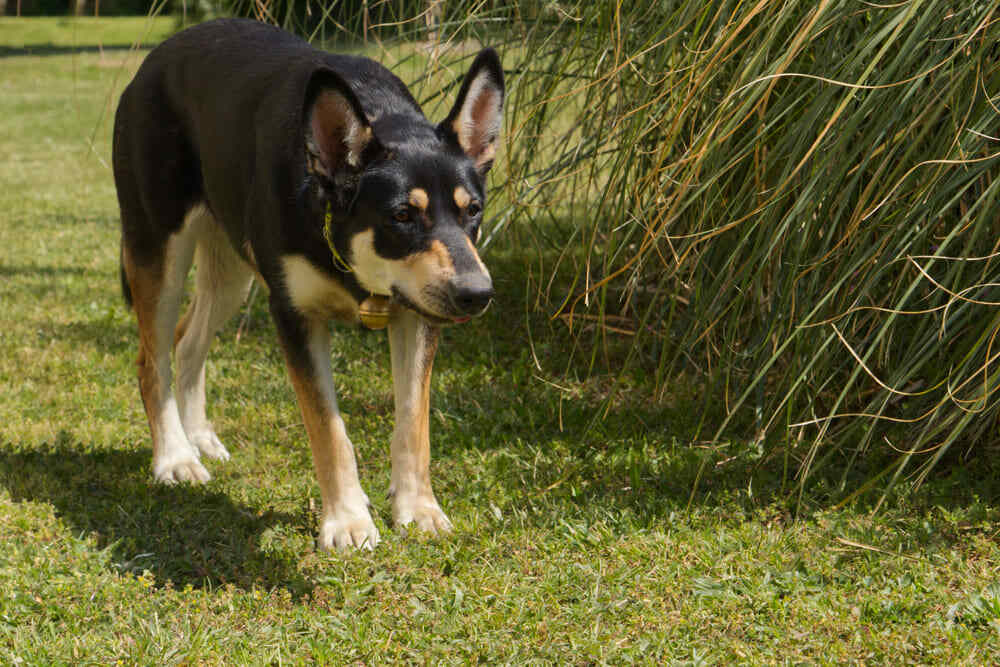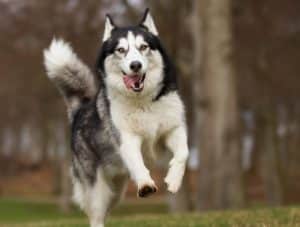Here’s a comprehensive guide to why dogs arch their backs, what to do, and key takeaways:
Reasons Why Dogs Arch Their Backs
- Physical Discomfort:
- Back pain (injury, spinal problems like disc herniation)
- Arthritis
- Muscle strain
- Gastrointestinal issues (bloating, constipation)
- Emotional Causes:
- Stress or anxiety
- Fear or uncertainty
- Excitement or playful energy release
- Behavioral Factors:
- Seeking attention
- Poor posture
- Greeting behavior
What To Do When Your Dog Arches Their Back
- Observe: Assess the situation. Is it playful stretching or does your dog seem distressed? Check for signs of pain or discomfort.
- Examine: Gently check for any injuries, swelling, or tender areas.
- Consult a Vet: If the behavior is frequent, seems painful, or accompanies other symptoms (limping, lethargy, etc.), a vet checkup is essential to rule out underlying health issues.
- Manage Environment: Create a calm, secure space for your dog, especially if the arching seems triggered by anxiety or fear.
- Ensure Exercise: Regular exercise promotes good muscle tone and spinal health but avoid excessive strain.
- Weight Control: Keep your dog at a healthy weight to minimize joint stress.
- Massage & Stretching: If your vet approves, gentle massage and guided stretches may help with muscle tension (seek professional instruction if unsure).
Key Takeaways
- Don’t Ignore Back Arching: While often normal, it can signal pain or underlying problems.
- Know Your Dog: Is this a normal stretch or something unusual?
- Vet Checkups Are Crucial: Especially for frequent arching, accompanying symptoms, or if you suspect injury or illness.
- A Holistic Approach: Addressing physical and emotional well-being is essential for a happy, healthy dog.
Remember, your vet is your best resource. If you’re ever unsure about your dog’s behavior or health, don’t hesitate to seek their advice!
Why Dogs Arch Their Backs?
One possible reason why a dog may stretch and arch its back is physical pain or discomfort. This may be due to problems in the spine or joints, as well as muscle heaviness.
If your dog exhibits this reaction frequently, it is recommended that you contact your veterinarian for an evaluation to determine possible causes.
The doctor will be able to prescribe the necessary treatment or recommend special exercises and regimens to strengthen the dog’s muscles and joints.
Additionally, a dog’s emotional state may also be the reason why it stretches and arches its back. Dogs may feel stressed, afraid or panicked by something or someone.
This may occur in a new or unusual situation, with the appearance of another animal, or after the passage of some event. In such cases, it is important to create a safe and calm environment for the dog.
If necessary, you can consult with an animal behaviorist who can help you understand the causes of stress and develop an action plan to eliminate it.
Causes Dogs Arch Their Backs:
Understanding why a dog stretches and arches its back is related to the anatomy and physiology of the canine body.
Dogs have a flexible spine made up of many vertebrae that allow them to make a variety of movements. Regular exercise and active play will also help maintain a healthy back for your dog. So, see below why dogs arch their backs.
Psychological Factors:
Some dogs may stretch and arch their backs due to psychological factors and behavioral problems. This may be due to anxiety, fear, or uncertainty about the environment or interactions with other animals or people.
A dog may also exhibit this behavior due to socialization problems, lack of attention, or lack of exercise. Some dogs may also simply have poor posture or posture issues that can cause them to stretch and arch their backs.
In addition, dogs may exhibit this behavior due to pain or discomfort. This may be due to problems in the spine, muscles, or joints. If your dog is exhibiting other symptoms such as fur, widespread seizures, changes in appetite, or increased irritability, you should contact your veterinarian for diagnosis and treatment.
Pain:
If your dog experiences back pain, he may try to stretch or arch to relieve the discomfort. This may be caused by injury, inflammation, or other reasons.
Spinal Problems:
Some dogs may have underlying or acquired spinal problems, such as herniated discs, degenerative changes, or congenital abnormalities. These conditions can lead to pain and discomfort, causing the dog to stretch and arch its back.
Arthritis:
Arthritis is an inflammatory disease that can affect the joints and spine. Dogs with arthritis may have a less flexible back and may exhibit back stretching and arching behavior.
Muscle Tension:
Sometimes the back muscles can become strained or pinched due to improper movement or training. In this case, the dog may constantly try to stretch its back to relieve the discomfort.
Problems with the Gastrointestinal Tract:
Some dogs may stretch and form figure-eights due to gastrointestinal problems. This may be due to constipation, bloating, or other digestive system problems.
If you notice that your dog is stretching and arching his back, it is important to see a veterinarian for a diagnosis and to determine the cause. Only after this can you choose the most appropriate treatment method and prevent possible complications.
Intervertebral Hernia:
the internal contents of the intervertebral disc extend beyond its shell. This can cause severe pain, impaired spinal function, and pressure on the spinal cord.
Spondylosis is a degenerative disease of the spine in which the vertebrae begin to fuse or form spines and shoots. This can lead to impaired movement, pain, and limited activity for the dog.
Spondylitis is an inflammatory disease of the spine that can be caused by infection or an autoimmune process. It causes inflammation of the spine and can cause pain, limited movement, and other symptoms.
Osteoarthritis is a degenerative disease of the joints, including the spine, that leads to inflammation and destruction of the joint surfaces. It can cause pain, limited movement, and disruption of normal function.
If you suspect problems with the dog’s spine, a diagnosis is necessary, including a physical examination, X-ray or MRI, and other possible tests. Treatment may include medication, physical therapy, surgery, or other methods, depending on the diagnosis and condition of the animal.
Stress:
Stress can be caused by a variety of factors, including conflict situations, changes in living or environmental conditions, lack of physical activity, and poor nutrition.
When a dog is stressed, its body releases hormonal substances that can affect the functioning of its muscles and joints, including its back. This can lead to pain and discomfort, causing the dog to arch his back in an attempt to relieve the discomfort.
To help your dog cope with stress and improve the condition of its nervous system, it is necessary to create a calm and comfortable environment, provide sufficient physical activity, a healthy diet, and regular walks in the fresh air.
It is also important to seek help from a veterinarian to rule out the possibility of other diseases that may be associated with an arched back in a dog.
Injuries:
Spinal injuries can be caused by falls or collisions, as well as excessive stress on the back from running, jumping, or lifting heavy objects. These injuries can result in damaged discs or torn ligaments, which can result in an arched back.
Exercises that require special skills or hyperextension of the spine can also cause problems. Some dog breeds are more susceptible to back injuries, especially those that have a genetic predisposition to spinal injuries.
It is important to remember that before starting any physical activity for your dog, you should consult your veterinarian, as improperly chosen or improperly performed exercises can damage the spine and cause arching of the back.
Insufficient Physical Activity:
If your dog doesn’t get enough exercise, his muscles can become weak, which can cause his back to arch. Problems with the musculoskeletal system.
Some dog breeds are more susceptible to musculoskeletal problems such as hip dysplasia or scoliosis. These problems can cause discomfort and pain, which can cause the dog to ache.
What To Do If You See Dogs Arch Their Backs?
Regardless of the reason for your dog’s behavior, it is important to create a safe and comfortable environment for your dog. Provide them with a place to relax and stretch. See below what to do if you see your dog arch their backs.
Do an Examination:
If your dog frequently stretches and arches his back, it is important to conduct a thorough examination to determine possible causes. Pay attention to the condition of the coat, skin, and paws, as well as the dog’s reaction to touch and movement.
Visit a Veterinarian:
If you are unsure of the cause of the problem, it is important to see a veterinarian. He will be able to determine if your dog has any medical conditions or injuries that may be causing this behavior.
Maintain Proper Physical Fitness:
Take care of your dog’s physical fitness by providing him with enough activity and exercise. Regular walks, playing outside or exercising will help strengthen your back muscles and prevent problems.
Provide The Right Environment:
It is important to create a comfortable environment for your dog. Provide her with a comfortable and orthopedic bed, provide a soft place to rest, and also provide her with warmth and coziness.
Watch Weight:
Excess weight can have a negative impact on your dog’s health, including his back. Maintain your dog’s optimal weight by regularly weighing him and monitoring his diet.
Avoid Stress and Injury:
Prevent your dog from developing spinal injuries and strains by avoiding unnecessary physical activity and avoiding dangerous situations.
Regular Massage and Stretching:
Massage and stretching can be helpful in relaxing the muscles and relieving tension in your dog’s back. But before doing this, it is better to consult a veterinarian to avoid possible complications.
Follow Your Veterinarian’s Recommendations:
If your veterinarian discovers any health problems with your dog, it is important to follow their recommendations for treatment and care for your pet.
Conclusion:
Although some breeds may have a predisposition to arch their back, it is important to note that these features should not cause painful conditions or restrict the dog’s movement. If you are concerned about the health or welfare of your dog, please contact your veterinarian for advice and guidance. If you notice your dog stretching or arching his back, it is recommended that you contact your veterinarian for a thorough examination to determine the cause of this behavior. Only after determining the cause can steps be taken to resolve the problem and ensure your dog’s comfort and well-being.








